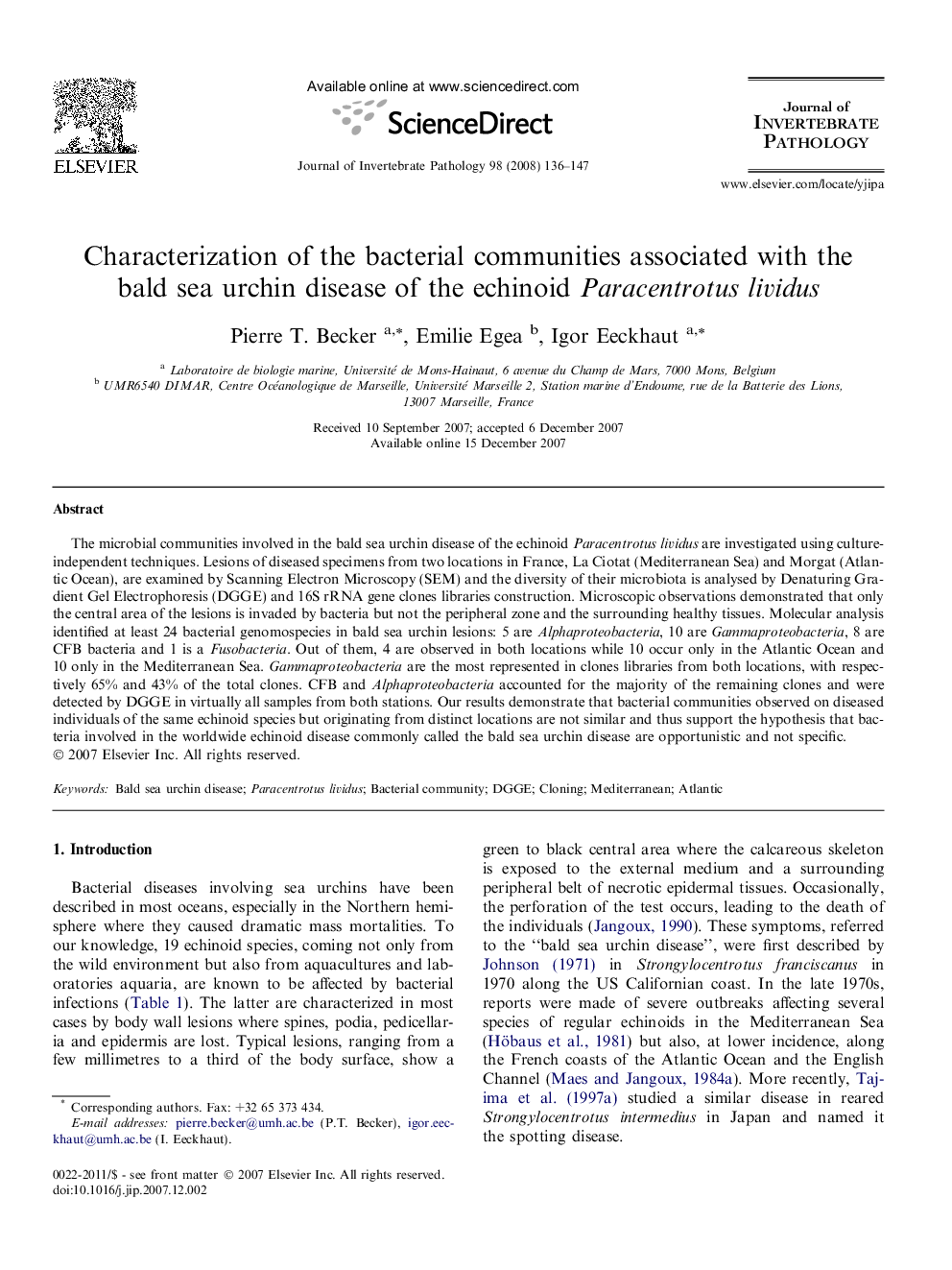| Article ID | Journal | Published Year | Pages | File Type |
|---|---|---|---|---|
| 4558542 | Journal of Invertebrate Pathology | 2008 | 12 Pages |
The microbial communities involved in the bald sea urchin disease of the echinoid Paracentrotus lividus are investigated using culture-independent techniques. Lesions of diseased specimens from two locations in France, La Ciotat (Mediterranean Sea) and Morgat (Atlantic Ocean), are examined by Scanning Electron Microscopy (SEM) and the diversity of their microbiota is analysed by Denaturing Gradient Gel Electrophoresis (DGGE) and 16S rRNA gene clones libraries construction. Microscopic observations demonstrated that only the central area of the lesions is invaded by bacteria but not the peripheral zone and the surrounding healthy tissues. Molecular analysis identified at least 24 bacterial genomospecies in bald sea urchin lesions: 5 are Alphaproteobacteria, 10 are Gammaproteobacteria, 8 are CFB bacteria and 1 is a Fusobacteria. Out of them, 4 are observed in both locations while 10 occur only in the Atlantic Ocean and 10 only in the Mediterranean Sea. Gammaproteobacteria are the most represented in clones libraries from both locations, with respectively 65% and 43% of the total clones. CFB and Alphaproteobacteria accounted for the majority of the remaining clones and were detected by DGGE in virtually all samples from both stations. Our results demonstrate that bacterial communities observed on diseased individuals of the same echinoid species but originating from distinct locations are not similar and thus support the hypothesis that bacteria involved in the worldwide echinoid disease commonly called the bald sea urchin disease are opportunistic and not specific.
